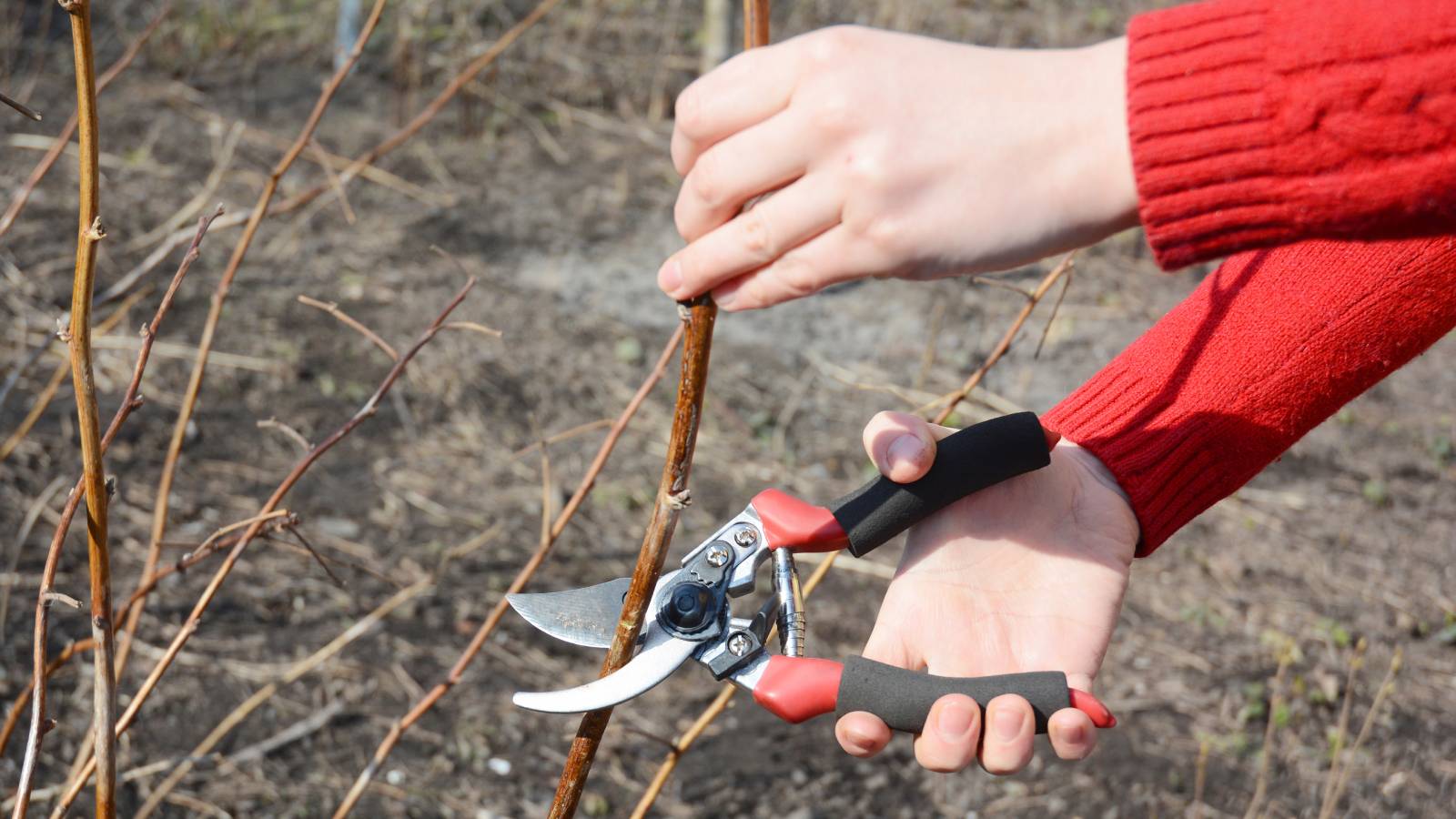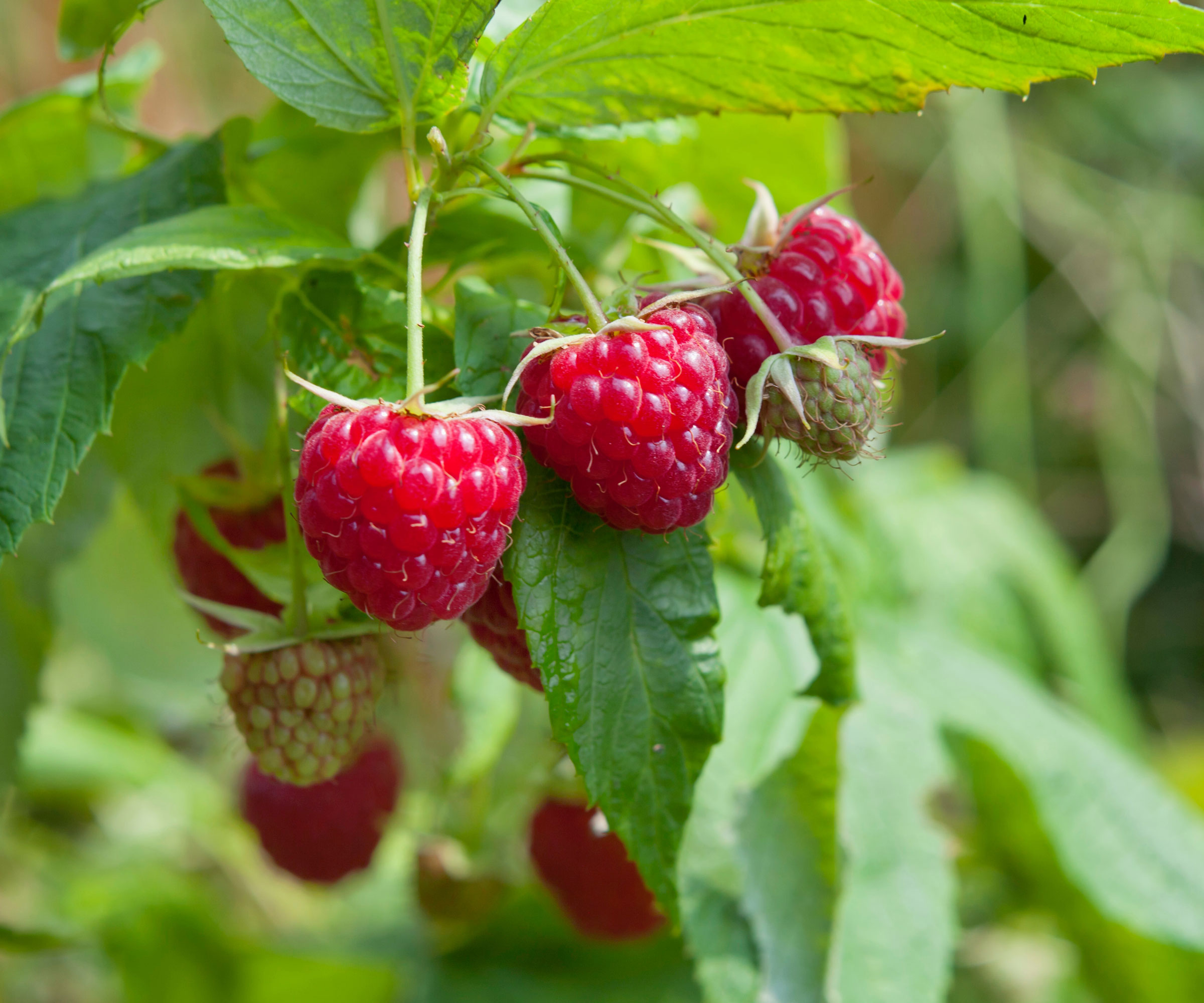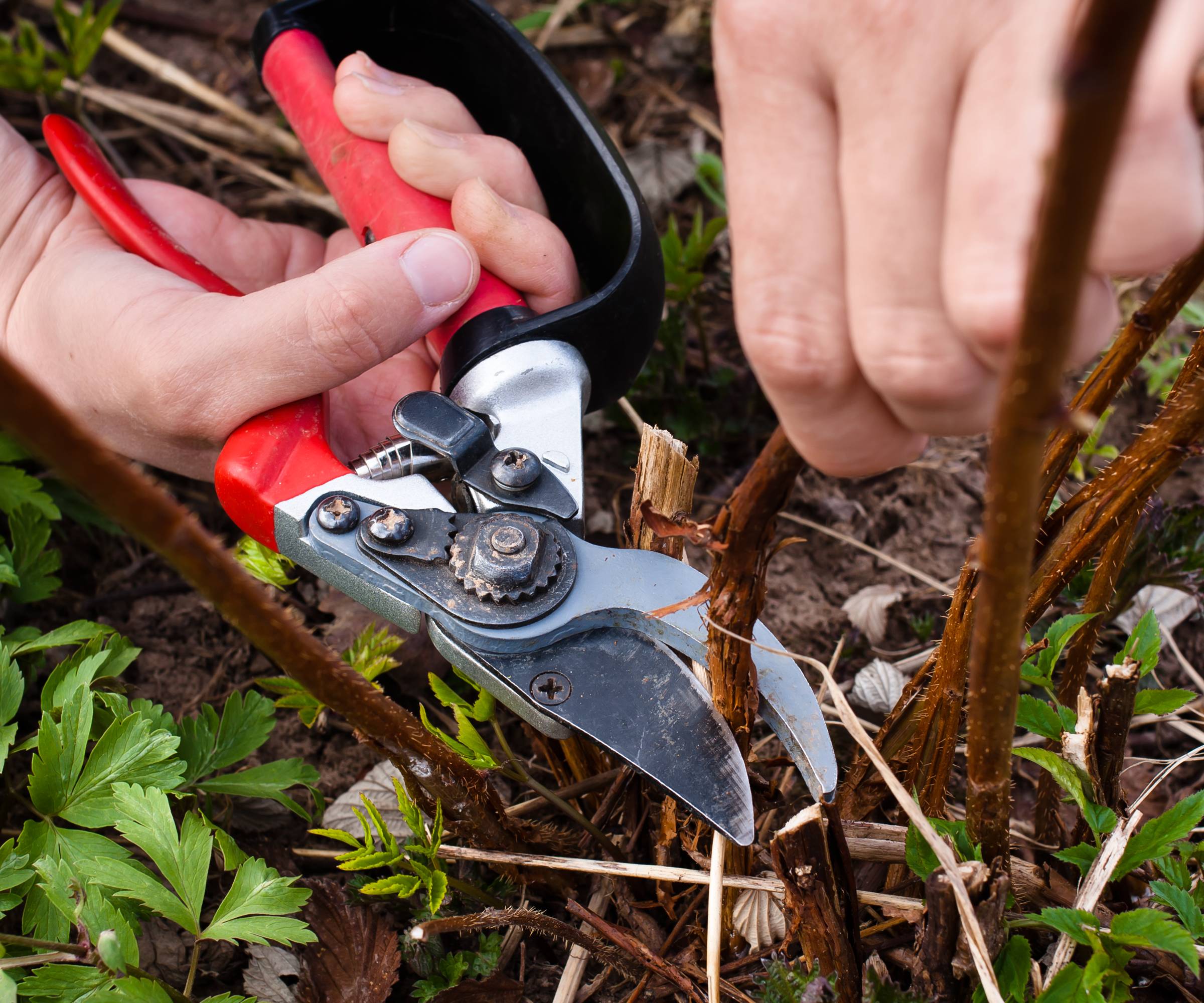How to Prune Raspberries: A Guide for Summer-Bearing and Everbearing Types
Pruning raspberries isn't just about avoiding thorns – it keeps the berries coming! We break down which cuts to make for summer, fall, or even double crops.

Teo Spengler

If you want canes that actually pay off, then learning how to prune raspberries is one of the keys to success. It can be the difference between a wild, scratchy tangle and a bush that throws out big, sweet berries.
A couple smart cuts make the plants stronger and the fruit easier to grab. Skip it and you’ll be fighting thorns for a handful of weak little berries while pests move in. Prune it right and the patch suddenly feels under control, like it’s working for you instead of the other way around.
You’ve got to know your raspberry type and when to cut. Summer-bearing and everbearing raspberries need different approaches, and timing is everything when you're growing raspberries.
Why Prune Raspberries?
Pruning raspberries isn’t just to make them look neat. You’re cutting out the weak and dead canes so the healthy ones can breathe. More light, more air, fewer problems with mold and blight. Less crowding means bigger, tastier berries since the plant’s not feeding useless branches. Plus, it makes harvesting easier, which means no more wrestling thorns.
It also keeps the growth cycle tight. Raspberries will fruit on a two-year schedule. The new canes (primocanes) grow one year, then turn into fruiting canes (floricanes) the next. Pruning keeps this cycle rolling, so your patch doesn’t fizzle out.

When to Prune Raspberries
Late winter to early spring (basically February or March) is prime time for both types, when plants are dormant. Do it before buds swell but after the last frost. This keeps plants happy and sets them up for spring growth.
You can also prune right after harvest. For pruning summer bearing raspberries, that’s July or August. For fall bearing raspberries, it’s November if you’re keeping some canes for a summer crop. Grab sharp, clean tools like Fiskars Steel Bypass Pruning Shears from Amazon to make clean cuts and avoid spreading disease.
Sign up for the Gardening Know How newsletter today and receive a free copy of our e-book "How to Grow Delicious Tomatoes".
Understanding Raspberry Types and How It Affects Pruning

Raspberries grow in two main types. There are summer-bearing and fall-bearing, often called everbearing. Summer-bearing plants put out fruit on their second-year canes in June or July, and those canes die back once they’re done. New primocanes pop up for next year’s crop.
It's easy to tell floricanes from primocanes. Floricanes that have woody, grayish, peeling bark. Primocanes are green and smooth.
Everbearing raspberries develop fruit on first-year canes in late summer or fall. You can also get a smaller summer crop from second-year canes if you don’t cut them all down. Pruning summer bearing raspberries is different from pruning everbearing raspberries, so know your type before you start swinging shears.
Pruning Summer Bearing Raspberries
Pruning summer-bearing raspberries is no big deal, though. After the June or July crop, chop those fruited floricanes right to the ground. Look for woody canes with old fruit stubs. Don’t leave any bits behind. They rot and pull in bugs.
Come early spring, pick out 10-12 strong primocanes per plant. Keep the ones about 1/4 inch (0.6 cm) thick, spaced 6 inches (about 15 cm) apart. Snip off any tips that look beat up from winter. Tie them to a trellis. Something like this Trellis Netting from Amazon works great. This lets light and air in, boosting your berries.
Pruning Fall Bearing Raspberries (Single Crop and Double Crop)

Pruning everbearing raspberries depends on your goal. Do you want one big fall crop? Mow all canes to the ground in late winter. You’ll skip summer berries. But the fall crop, hitting August or September, will be fat and sweet.
For two crops, go easy. After the fall harvest, just cut the top parts of canes that fruited. In spring, keep 4-6 of those second-year canes per plant. Space them 6 inches (15 cm) apart. Trim them to 3-4 feet (0.9–1.2 cm). After the summer crop, pull those floricanes out. This gets you two smaller harvests, great for tight spaces.
After Pruning
Once you’re done trimming raspberry bushes, tidy up fast. Grab all the cut canes and debris. Toss them far from the garden or burn them. This keeps diseases like cane blight away. Add mulch to hold moisture and stop weeds. Scotts Nature Scapes Mulch from Amazon does the job.
Give plants about an inch of water a week, more when new growth starts. Feed raspberries in early spring with a 10-10-10 fertilizer. What to try what I use? Espoma Garden-Tone from Amazon is wonderful. Use about 4-6 pounds (1.81–2.72 kg.) per 100 feet (30.48 m) of row. Spot aphids? Hit them with neem oil. Don’t overwater, as this can lead to root rot.
Mistakes to Avoid
Messing up pruning can wreck your berries. Don’t cut primocanes in fall for summer-bearing raspberries. Those are next year’s fruiters. Leaving stubs after cutting floricanes is bad news. They rot and draw bugs. Skipping thinning’s another mistake. Too many canes block light and shrink berries.
Don’t prune in mid-summer. It stresses plants and cuts fruit. You are going to want to stick to late winter or right after raspberry harvest. I’d also recommend to always use sharp, clean shears, because jagged cuts or dirty tools spread disease. Do it right, and your patch stays strong.

Tyler’s passion began with indoor gardening and deepened as he studied plant-fungi interactions in controlled settings. With a microbiology background focused on fungi, he’s spent over a decade solving tough and intricate gardening problems. After spinal injuries and brain surgery, Tyler’s approach to gardening changed. It became less about the hobby and more about recovery and adapting to physical limits. His growing success shows that disability doesn’t have to stop you from your goals.
- Teo SpenglerWriter